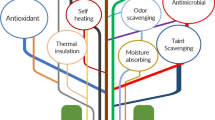Abstract
In this study, anti-diabetic and anti-oxidation activities of the rice-derived peptides, obtained from sake lees and rice bran using a commercial protease from Aspergillus oryzae, were evaluated. Rice and rice bran peptides showed moderate anti-oxidation activities that were determined using the hydrophilic oxygen radical absorbance capacity assay. However, the hydrolysates from rice and rice bran exhibited no inhibitory activity against human maltase–glucoamylase. On the contrary, the rice protein hydrolysate showed an inhibitory activity (IC50 = 1.45 ± 0.13 mg/mL) toward dipeptidylpeptidase-IV (EC 3.4.14.5, DPP-IV) that metabolizes the insulinotropic hormone, glucagon-like peptide-1, in the same manner as the rice bran protein hydrolysate. The sake lees hydrolysate showed lowest bioactivity among the other rice-derived hydrolysates. Further, we identified that the dipeptides Ile-Pro, Met-Pro, Val-Pro, and Leu-Pro from the rice protein hydrolysate are involved in the inhibitory activity against DPP-IV. The concentrations of Ile-Pro, Met-Pro, Val-Pro, and Leu-Pro dipeptides were 1.22, 0.23, 1.59, and 1.94 (μg/mg in the rice protein hydrolysate), respectively.




Similar content being viewed by others
References
Ames BN, Gold LS, Willett WC (1995) The causes and prevention of cancer. Proc Natl Acad Sci USA 92:5258–5265
Arima J, Uesugi Y, Iwabuchi M, Hatanaka T (2006) Study on peptide hydrolysis by aminopeptidases from Streptomyces griseus, Streptomyces septatus and Aeromonas proteolytica. Appl Microbiol Biotechnol 70:541–547
Byun T, Kofod L, Blinkovsky A (2001) Synergistic action of an X-proryl dipeptidyl aminopeptidase and a non-specific aminopeptidase in protein hydrolysis. J Agric Food Chem 49:2061–2063
Engelhart MJ, Geerlings MI, Ruitenberg A, van Swieten JC, Hofman A, Witteman JC, Breteler MM (2002) Dietary intake of antioxidants and risk of Alzheimer disease. JAMA 287:3223–3229
Hatanaka T, Inoue Y, Arima J, Kumagai Y, Usuki H, Kawakami K, Kimura M, Mukaihara T (2012) Production of dipeptidyl peptidase IV inhibitory peptides from defatted rice bran. Food Chem 134:797–802
Hatanaka T, Kawakami K, Uraji M (2014) Inhibitory effect of collagen-derived tripeptides on dipeptidylpeptidase-IV activity. J Enzyme Inhib Med Chem 29:823–828
Jones K, Sim L, Mohan S, Kumarasamy J, Liu H, Avery S, Naim HY, Quezada-Calvillo R, Nichols BL, Mario Pinto B, Rose DR (2011) Mapping the intestinal alpha-glucogenic enzyme specificities of starch digesting maltose-glucoamylase and sucrose-isomaltase. Bioorg Med Chem 19:3929–3934
Kang MG, Yi SH, Lee JS (2013) Production and characterization of a new α-glucosidase inhibitory peptide from Aspergillus oryzae N159-1. Mycobiology 41:149–154
Kawakami K, Li P, Uraji M, Hatanaka T, Ito H (2014) Inhibitory effects of pomegranate extracts on recombinant human maltase-glucoamylase. J Food Sci 79:1848–1853
Li-chan ECY, Hunag SL, Jao CL, Ho KP, Hsu KC (2012) Peptides derived from atlantic salmon skin gelatin as dipeptidyl-peptidase IV inhibitors. J Agric Food Chem 60:973–978
Matsui T, Oki T, Osajima Y (1999) Isolation and identification of peptidic α-glucosidase inhibitors derived from sardine muscle hydrolysate. Z Naturforsch C 54:259–263
Nongonierma AB, FitzGerald RJ (2013) Dipeptidyl peptidase IV inhibitory properties of a whey protein hydrolysate: influence of fractionation, stability to simulated gastrointestinal digestion and food-drug interaction. Int Dairy J 32:33–39
Ohosawa K, Satsu H, Ohki K, Enjoh M, Takano T, Shimizu M (2008) Producibility and digestibility of antihypertensive beta-casein tripeptides, Val-Pro-Pro and Ile-Po-Pro, in the gastrointesitinal tract: analyses using an in vitro model of mammalian gastrointestinal digestion. J Agric Food Chem 56:854–858
Prior RL, Wu X, Schaich K (2005) Standardized methods for the determination of antioxidant capacity and phenolics in foods and dietary supplements. J Agric Food Chem 53:4290–4302
Richard EP (2008) Overview of glucagon–like peptide-1 analogs and dipeptidyl peptidase-4 inhibitors for type 2 diabetes. Medscape J Med 10:171–183
Richter B, Banderia-Echtler E, Bergerhoff K, Lerch C (2008) Emerging role of dipeptidyl peptidase-4 inhibitors in the management of type 2 diabetes. Vasc Health Risk Manag 4:753–768
Satake M, Enjoh M, Nakamura Y, Takano T, Kawamua Y, Arai S, Shimizu M (2002) Transepithelial transport of the bioactive tripeptide, Val-Pro-Pro, in human intestinal Caco-2 cell monolayers. Biosci Biotechol Biochem 66:378–384
Sim L, Willemsma C, Mohan S, Naim HY, Mario Pinto B, Rose DR (2010) Structural basis for substrate selectivity in human maltase-glucoamylase an sucrose-isomaltase N-terminal domains. J Bio Chem 285:17763–17770
Summary of Patient Survey 2011 (2011) http://www.mhlw.go.jp/english/database/db-hss/sps_2011.html
Wang Y, Landheer S, van Gilst WH, van Amerongen A, Hammes HP, Henning RH, Deelman LE, Buikema H (2012) Attenuation of renovascular damage in Zucker diabetic fatty rat by NWT-03, an egg protein hydrolysate with ACE- and DPP4-inhibitory activity. PLoS ONE 7:e46781
Watanabe J, Oki T, Takebayashi J, Yamasaki K, Takano-Ishikawa Y, Hino A, Yasui A (2012) Method validation by interlaboratory studies of improved hydrophilic oxygen radical absorbance capacity methods for the determination of antioxidant capacities of antioxidant solutions and food extracts. Anal Sci 28:159–165
Willcox BJ, Curb JD, Rodriguez BL (2008) Antioxidants in cardiovascular health and disease: key lessons from epidemiologic studies. Am J Cardiol 101:75D–86D
Yan QJ, Huang LH, Sun Q, Jiang ZQ (2015) Isolation, identification and synthesis of four novel antioxidant peptides from rice residue protein hydrolyzed by multiple proteases. Food Chem 179:209–295
Yu Z, Yin Y, Zhao W, Liu J, Chen F (2012) Anti-diabetic activity peptides from albumin against α-glucosidase and α-amylase. Food Chem 135:2078–2085
Acknowledgments
Rice protein was obtained by the good office of Mr. Inoue. We would like to acknowledge Mr. Yoshikazu Inoue, who was one of our colleagues, and we were very sorry to hear the news of his sudden death. He was a delightful person, and we had a very happy time together in the laboratory. The authors dedicate this paper as a humble tribute to his memory.
Conflict of interest
All authors declare that they have no conflict of interest.
Human and Animal Rights
This article does not contain any studies with human participants or animals performed by any of the authors.
Author information
Authors and Affiliations
Corresponding author
Electronic supplementary material
Below is the link to the electronic supplementary material.
Rights and permissions
About this article
Cite this article
Hatanaka, T., Uraji, M., Fujita, A. et al. Anti-oxidation Activities of Rice-Derived Peptides and Their Inhibitory Effects on Dipeptidylpeptidase-IV. Int J Pept Res Ther 21, 479–485 (2015). https://doi.org/10.1007/s10989-015-9478-4
Accepted:
Published:
Issue Date:
DOI: https://doi.org/10.1007/s10989-015-9478-4




